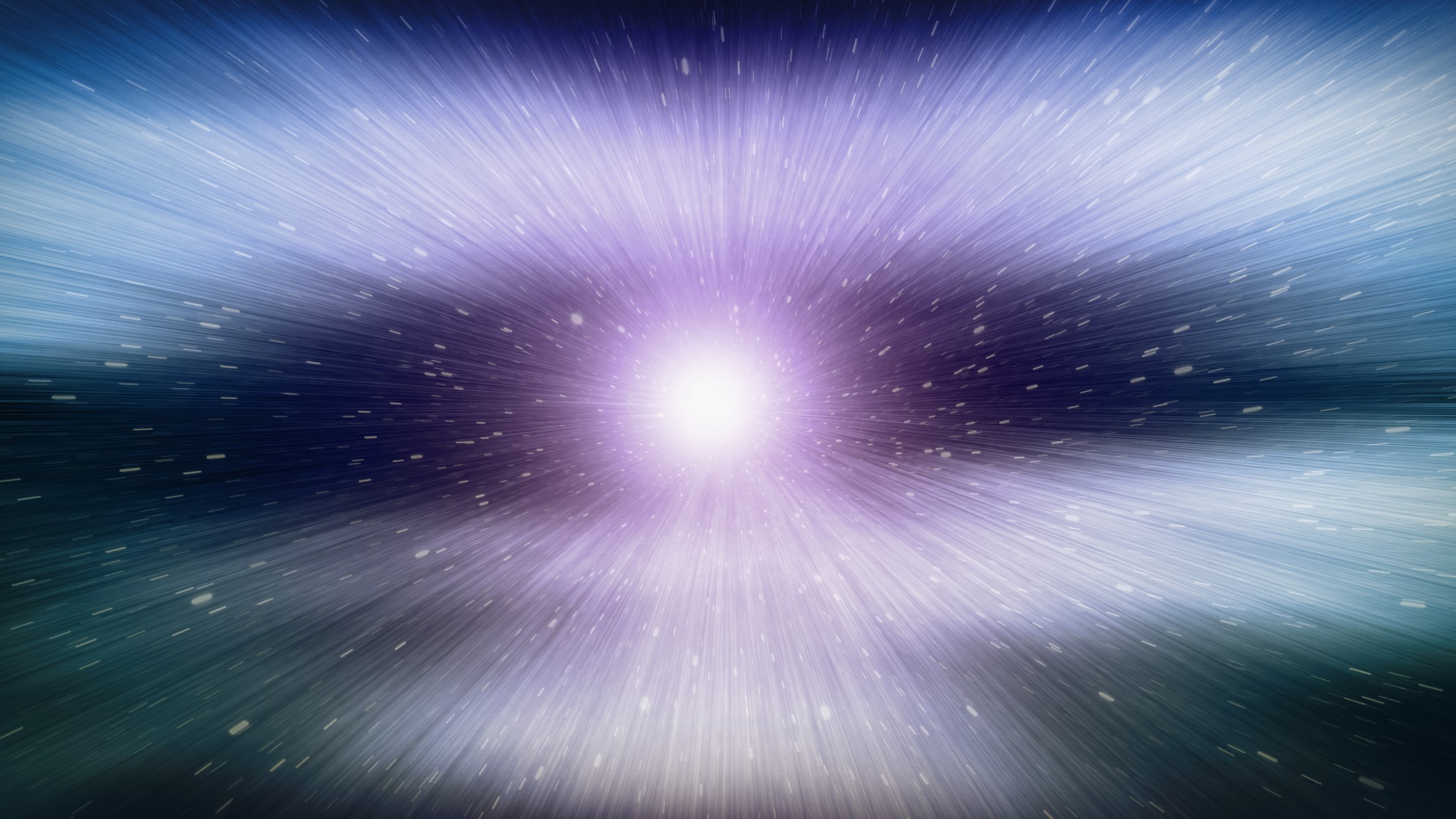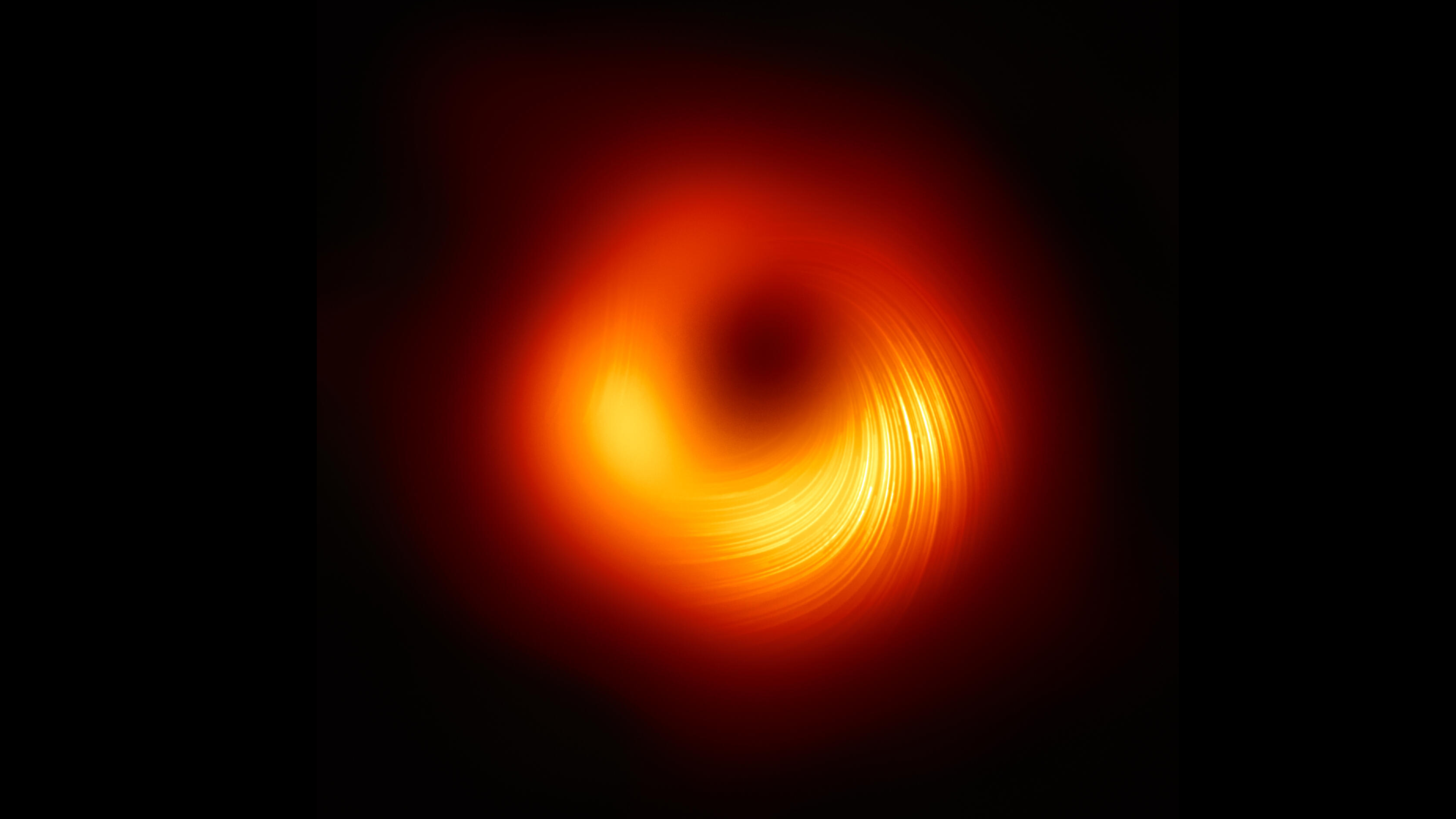Could white holes actually exist?
White holes are mathematically possible, according to general relativity. But does that mean they're actually out there?


Black holes seem to get all the attention. But what about their mirror twins, white holes? Do they exist? And, if so, where are they?
To understand the nature of white holes, first we have to examine the much more familiar black holes. Black holes are regions of complete gravitational collapse, where gravity has overwhelmed all other forces in the universe and compressed a clump of material all the way down to an infinitely tiny point known as a singularity. Surrounding that singularity is an event horizon, which is not a physical, solid boundary, but simply the border around a singularity where the gravity is so strong that nothing, not even light, can escape.
We know how the universe forms black holes. When a massive star dies, its immense weight crushes onto its core, triggering the creation of a black hole. Any matter or radiation that wanders too close to the black hole gets trapped by the strong gravity and pulled beneath the event horizon to its ultimate doom.
Related: What happens at the center of a black hole?
We understand this process of black hole formation, and how black holes interact with their environments, through Einstein's theory of general relativity. To arrive at the concept of a white hole, we have to recognize that general relativity doesn't care about the flow of time. The equations are time-symmetric, meaning the math works perfectly fine running forward or backward in time.
So if we were to take a movie of the formation of a black hole and run it in reverse, we would find an object streaming radiation and particles. Eventually, it would explode, leaving behind a massive star. This is a white hole, and according to general relativity, this scenario is perfectly fine.
White holes would be even stranger than black holes. They would still have singularities at their centers and event horizons at their borders. They would still be massive, gravitating objects. But any material that entered a white hole would immediately get ejected at a speed greater than that of light, causing the white glow to shine ferociously. Anything on the outside of a white hole would never be able to get inside it, because it would have to travel faster than the speed of light to cross inward through the event horizon.
Breaking space news, the latest updates on rocket launches, skywatching events and more!
But if white holes are allowed by the math of general relativity, then why don't we suspect that they exist in the real universe? The answer is that general relativity is not the only word on the cosmos. There are other branches of physics that tell us about the inner workings of the universe, like our theories of electromagnetism and thermodynamics.
Within thermodynamics, there is the concept of entropy, which is, very roughly speaking, a measure of the disorder in a system. The second law of thermodynamics tells us that the entropy of closed systems can only go up. In other words, disorder always increases.
As an example, say you throw a piano into a wood chipper. Out comes a bunch of pulverized debris. Disorder in the system has increased, and the second law of thermodynamics has been satisfied. But if you throw a bunch of random pieces into that same wood chipper, you won't get a fully formed piano out of it, because that would cause disorder to decrease. (Highly ordered systems, like life, can arise on Earth — but they come at the cost of increased entropy within the sun. You're still not getting pianos out of wood chippers, no matter how you construct your system.)
We can't simply run the process of black hole formation in reverse and get a white hole, because that would cause entropy to decrease — stars don't miraculously appear out of gigantic cosmic explosions. So, while general relativity is agnostic about the reality of white holes, thermodynamics gives the concept a hard no.
The only way to form a white hole would be to have some exotic process operating in the early universe that baked the existence of a white hole into the fabric of space-time itself. That way, the white hole formation process would bypass the trouble with decreasing the entropy — the white hole would simply be there, existing, since the beginning of time.
Unfortunately, white holes would also be fantastically unstable. They would still gravitate and pull material toward them, but nothing would be able to cross the event horizons. As soon as anything, even a single photon (particle of light) approached a white hole, it would be doomed. If the particle approached the event horizon, it would not be able to cross it, sending the energy of the system skyrocketing. Eventually, the particle would have so much energy that it would trigger the collapse of the white hole into a black hole, ending its existence.
So, as fun and mind-bending as white holes appear to be, they do not seem to be features of the real universe — just ghosts haunting the mathematics of general relativity.

Paul M. Sutter is a cosmologist at Johns Hopkins University, host of Ask a Spaceman, and author of How to Die in Space.

